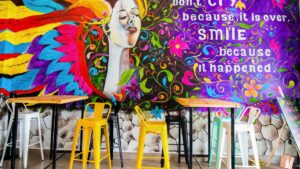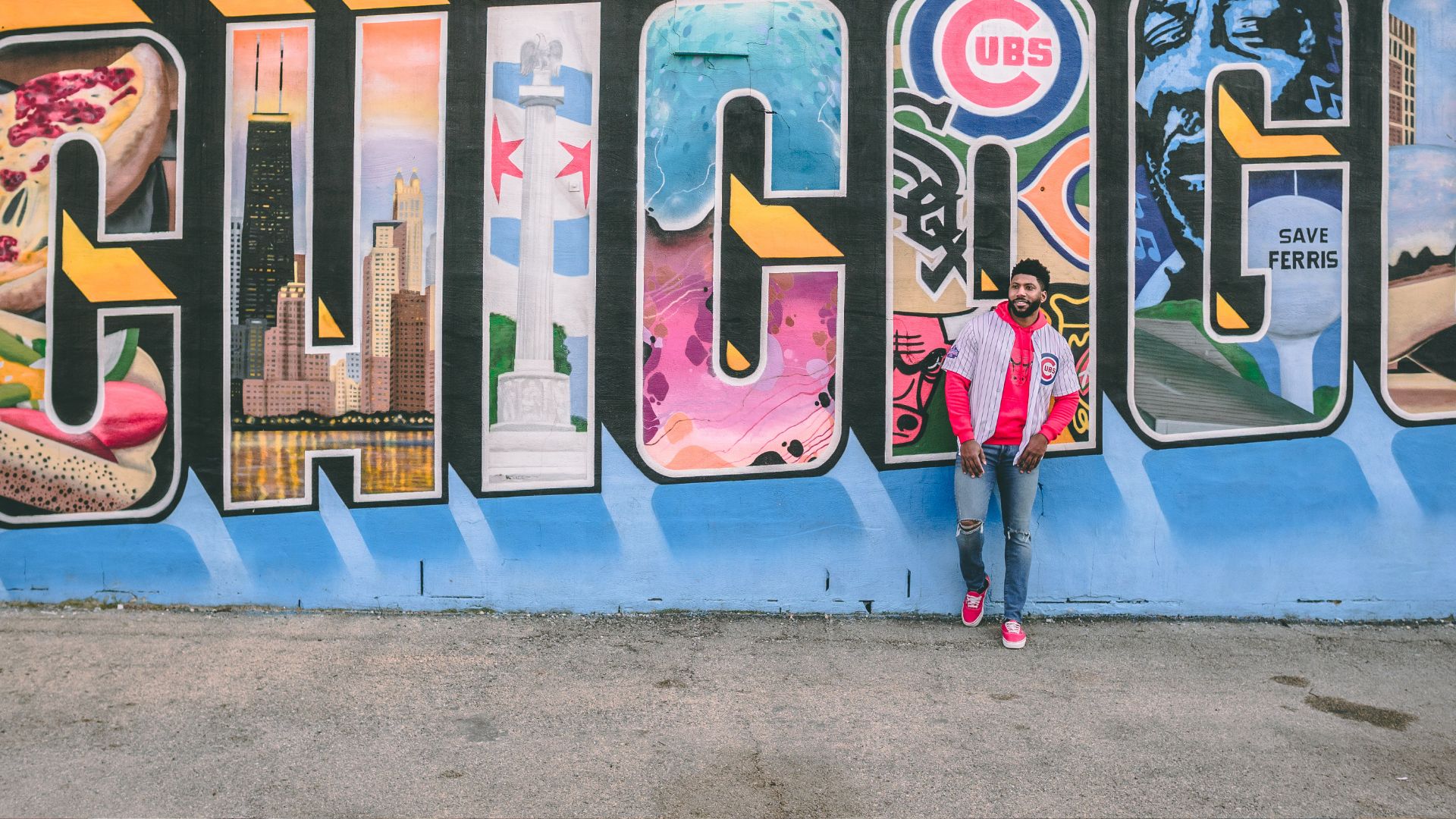When it comes to murals, their impact goes beyond just the art they can transform spaces, evoke emotions, and even become iconic landmarks. But how do you ensure a mural blends seamlessly with its surroundings? Let’s dive into some key strategies.
Understanding the Environment
Before starting, take time to absorb the surroundings. Consider the architecture, color palette, and ambiance of the area. Is it modern, historical, urban, or rural? Understanding these elements helps in creating a mural that complements rather than clashes.
Harmonizing Colors and Themes
Harmony is key. Reflect the colors of the environment in your mural. Whether it’s the hues of nature or the vibrancy of a cityscape, integrating these tones will forge a connection. Similarly, aligning the mural’s theme with the local culture or history can make it feel like a natural extension of the surroundings.
Size and Placement
Carefully choose the size and placement of your mural. A colossal mural might overpower a small alley while a tiny artwork might get lost on a vast wall. Also, consider sightlines and how people will interact with the mural from different angles and distances.

Engaging the Community
Involving the local community can foster a sense of ownership and relevance. Seek their input, involve them in the creative process, or depict elements that resonate with their experiences. This not only makes the mural more meaningful but also strengthens its connection with the surroundings.
Case Studies and Inspirations
Looking at successful examples can provide great insights. The Brooklyn Street Art website showcases various murals around the world, illustrating how artists have harmonized their creations with diverse environments.
Collaborating with Local Artists
Partnering with local artists can be invaluable. Their familiarity with the area, its culture, and its people can enrich the mural’s narrative, making it more relatable and authentic.
So,…
Creating a cohesive mural isn’t just about painting it’s a delicate interplay of artistry, community engagement, and environmental sensitivity. By understanding, respecting, and collaborating with the surroundings, a mural can truly become a captivating piece of art that enhances its environment.
Remember, each mural is a unique story waiting to be told, adding depth, beauty, and character to its surroundings.
Balancing Creativity with Context
When it comes to integrating a mural with its surroundings, it’s essential to strike a balance between artistic expression and respecting the context. Let’s delve deeper into some practical steps to achieve this harmonious fusion.
Research and Contextualization
Thorough research is the cornerstone. Understand the history, stories, and cultural nuances of the area. This knowledge informs the narrative of the mural, infusing it with local significance and relevance.
Adaptation of Style
While staying true to your artistic style, consider adapting it to suit the environment. Embrace elements that resonate with the locale—be it architectural motifs, natural landscapes, or cultural symbols.
Visual Continuity
Create a visual flow that seamlessly integrates the mural into its surroundings. This could involve using architectural features as part of the artwork or aligning the mural’s lines and shapes with those of the building.
Environmental Impact
Consider the longevity of the mural. Choose durable materials that withstand weather conditions and require minimal maintenance, ensuring the artwork remains vibrant and impactful over time.
Community Engagement
Engage the community not just during creation, but also post-installation. Encourage dialogue, organize events around the mural, and involve locals in its upkeep. A sense of ownership fosters pride and ensures the mural becomes an integral part of the community.
Preservation and Respect
Respect the space and its inhabitants. Ensure the mural’s message is inclusive and respectful, avoiding controversial or offensive themes that might alienate the community.
Conclusion
Ultimately, a cohesive mural isn’t just about aesthetics; it’s a narrative that weaves itself into the fabric of its surroundings. By embracing the essence of the location, involving the community, and maintaining respect for the environment, a mural can transcend being mere art it becomes a unifying force, an expression of collective identity.
Remember, a well-executed mural doesn’t just embellish walls; it breathes life into spaces, evoking emotions, and leaving a lasting impression on all who encounter it.
Comparison tabular
This tabular comparison provides a concise breakdown of the key elements when ensuring a mural’s cohesion with its surroundings:
| Aspect | Creating a Cohesive Mural | Balancing Creativity with Context |
|---|---|---|
| Understanding Environment | Absorb the surroundings to align the mural with the ambiance, architecture, and colors of the area | Conduct thorough research on the history, culture, and stories of the locality to infuse the mural with local significance |
| Harmonizing Colors and Themes | Reflect the color palette of the environment in the mural; integrate themes that resonate with the locale | Adapt artistic style while embracing elements like architectural motifs, cultural symbols, or natural landscapes |
| Size and Placement | Choose appropriate size and placement considering the scale of the wall and its surroundings | Create a visual flow by aligning mural lines and shapes with the building’s features |
| Engaging the Community | Involve the local community in the creative process and reflect their experiences in the mural | Engage the community during and after installation to foster ownership and pride |
| Case Studies and Inspirations | Study successful murals to draw insights into blending art with the environment | Use examples to understand how artists have integrated their creations with diverse surroundings |
| Collaborating with Local Artists | Partner with local artists to enrich the mural’s narrative and make it more authentic | Embrace local artists’ perspectives to incorporate cultural nuances and local significance |
| Environmental Impact | Choose durable materials for longevity and minimal maintenance | Consider weather-resistance and longevity for the mural’s sustainability |
This comparison helps highlight the similarities and differences between creating a cohesive mural and balancing creativity with the context of its surroundings. Both approaches emphasize the importance of research, community engagement, and respecting the environment while integrating art with the locale.
Wrapping up
In the realm of public art, a mural holds the power to transcend boundaries, connect hearts, and encapsulate stories. The journey to creating a cohesive mural isn’t solely about brushstrokes and colors; it’s a beautiful dance between creativity and context.
As you embark on this creative endeavor, remember that each stroke of paint should echo the spirit of its surroundings. It’s not merely about painting a wall; it’s about crafting a narrative that speaks to the community, honors its heritage, and resonates with its people.
Art, when woven seamlessly into its environment, becomes a symbol—a tapestry of shared experiences, emotions, and aspirations. It’s a testament to the beauty of collaboration, where artists and communities unite to transform spaces into living, breathing galleries.
So, as your brush meets the canvas of a wall, let it tell a story. Let it echo the laughter of the neighborhood, the whispers of history, and the dreams of the future. Let it be a testament to the harmony between art and surroundings, a beacon of unity and inspiration for all who pause to behold its beauty.

For over a decade, I’ve been Mike, an artist, crafter, and designer deeply immersed in the Croc world. I thrive on crafting unique, size-inclusive patterns, fostering creativity, and sharing them on ktforum.com. My designs aim to ignite your creative spark and delight you, ensuring clarity and ease of use through rigorous testing. Join me in expressing your creative flair and showcasing your craft with joy.
Related Posts
- Was the George Floyd mural part of a larger art project
The George Floyd mural was indeed part of a larger movement and art project that…
- Was the 2pac mural a part of a larger art project
The iconic 2Pac mural that graced walls in various cities wasn't initially part of a…
- Was the Marcus Rashford mural a part of a larger art project
The Marcus Rashford mural has sparked conversations worldwide, igniting interest in its origin and connection…
- Who created the 2Pac mural
When it comes to immortalizing cultural icons through street art, few murals hold the same…

